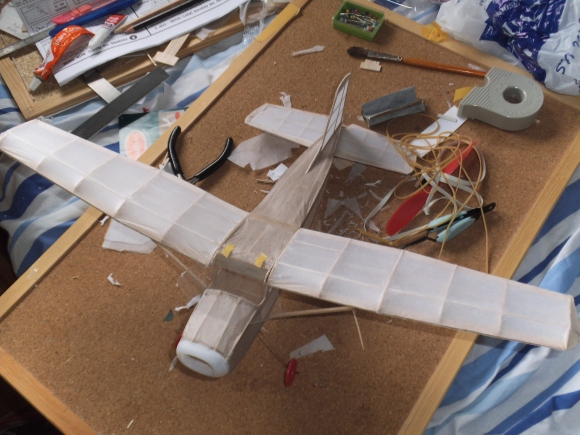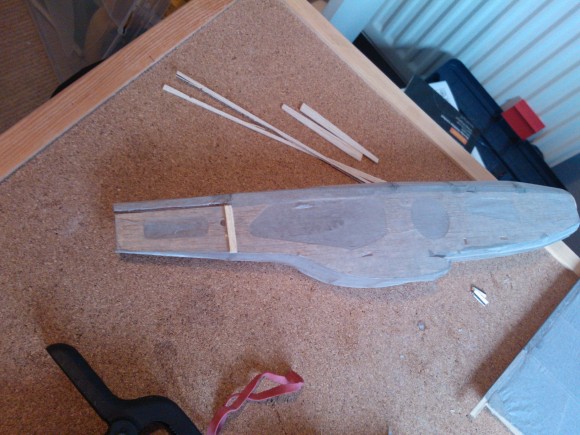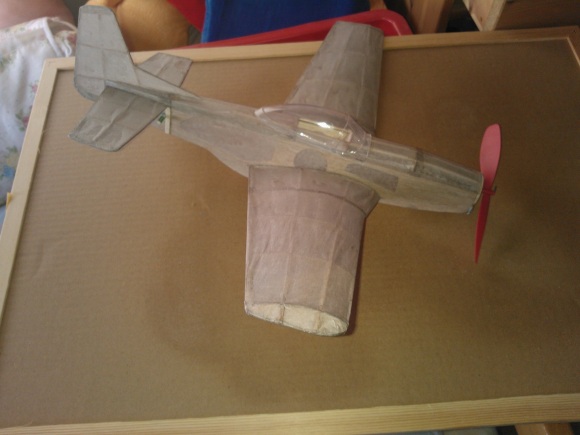The sealing-and-sanding process can’t really be captured in photographs. All it involves is giving the frames a few coats of your chosen substance (a lot of modellers use cellulose dope, I use thinned PVA glue, as I’ve mentioned in previous builds), sanding between each coat, in an effort to seal the wood completely to stop it absorbing glue and water when covering takes place.
Once that’s complete, and dry, and sanded, it’s time to cover the whole damn thing. I often find the easiest place to start is the tail surfaces (they’re flat, so it’s a safe way to get back into the groove as it were).
However, this time things didn’t go entirely to plan, and I managed to warp the tail surfaces (a common problem in my models), so I had to take all the tissue off and start again. Luckily this isn’t a complicated, time-consuming process, so it was quickly done.
The wings were easier to cover and keep straight, though the shrinking of the tissue left a few wrinkles at the point where the ribs meet the leading edge (as you can see in the photo below).

The fuselage was also pretty easy, though the covering did reveal a problem with the very rear. One of the stringers was too low, which made the attachment of the vertical tail a challenge as the taut tissue was sitting a millimetre or two above the stringer to which the tail should be glued.
At this, the next problem arose: it looked as though the fuselage was twisted somehow. It turned out that it wasn’t, and I’d actually managed to attach the wings with unequal dihedral, which was easily solved when the wing struts were installed.
I think I have made more mistakes with this build than the previous two put together, which is very frustrating and a little dispiriting as this is meant to be a simple build to get kids into the hobby. On the positive side, I think I have solved all of the major problems and I’m starting to understand which issues are important and which are merely cosmetic. My main aim with this model is to get it to fly. If I can do that, I don’t really care how it looks. I want to learn how to build a flying model first and then work on making them prettier each time.







